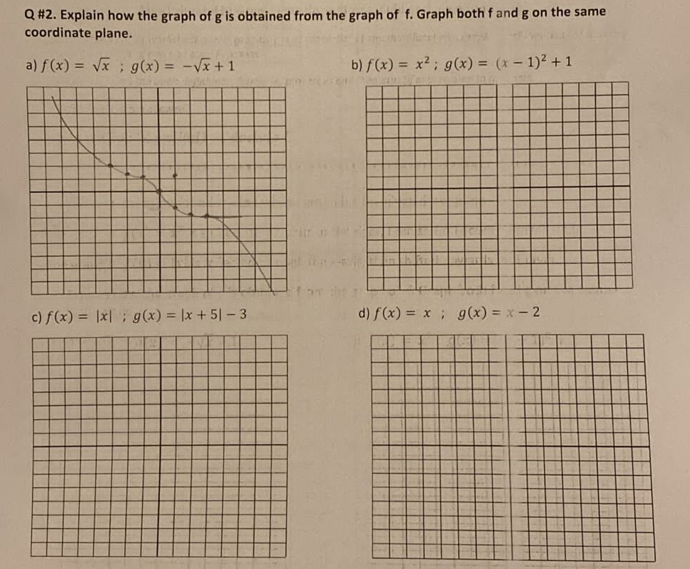Q #2. Explain how the graph of g is obtained from the graph of f. Graph both f and g on the same coordinate plane. a) f(x)=√x; g(x): -√x+1 b) f(x) = x²; g(x) = (x - 1)² + 1 c) f(x) = |x|; g(x) = |x+51-3 d) f(x)= x; g(x) = x - 2 "itr
Q #2. Explain how the graph of g is obtained from the graph of f. Graph both f and g on the same coordinate plane. a) f(x)=√x; g(x): -√x+1 b) f(x) = x²; g(x) = (x - 1)² + 1 c) f(x) = |x|; g(x) = |x+51-3 d) f(x)= x; g(x) = x - 2 "itr
Algebra & Trigonometry with Analytic Geometry
13th Edition
ISBN:9781133382119
Author:Swokowski
Publisher:Swokowski
Chapter3: Functions And Graphs
Section: Chapter Questions
Problem 1DE
Related questions
Question

Transcribed Image Text:Q #2. Explain how the graph of g is obtained from the graph of f. Graph both f and g on the same
coordinate plane.
a) f(x) = √√x ; g(x) = -√x+1
b) f(x) = x²; g(x) = (x - 1)² + 1
c) f(x) = |x|; g(x) = |x + 51-3
d) f(x) = x; g(x) = x - 2
Expert Solution
This question has been solved!
Explore an expertly crafted, step-by-step solution for a thorough understanding of key concepts.
Step by step
Solved in 5 steps with 4 images

Recommended textbooks for you

Algebra & Trigonometry with Analytic Geometry
Algebra
ISBN:
9781133382119
Author:
Swokowski
Publisher:
Cengage

Algebra & Trigonometry with Analytic Geometry
Algebra
ISBN:
9781133382119
Author:
Swokowski
Publisher:
Cengage